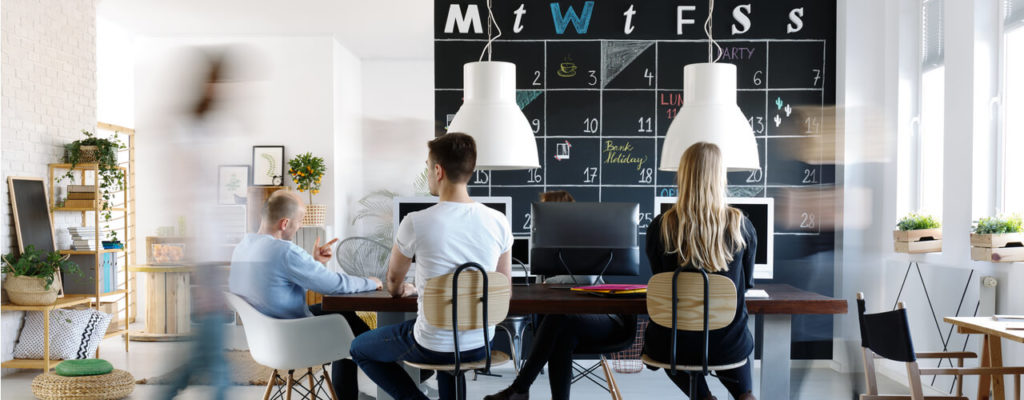By: 365 Business

Source: Shutterstock
Changing times call for changing work environment spaces. Not everyone has the same job or the same work style. Switching things up in the workplace can help refresh your work mind, making you more productive. A traditional cubicle approach can be better for your individual work ethic or an open space for your creative style. On the other hand, while the benefits of working in an office seem evident, your work style might be more in tune with a non-traditional office space. Here is how different work styles may determine the best types of office space for you.
Detail-Oriented — Cubicles
Isolated working spaces—such as the traditional cubicles—are especially useful for detail-oriented people. In-depth concentration is more likely when you are alone. People who excel in catching details thrive in this solitude work environment. Providing privacy will eliminate distractions leading to further productivity. Cubicles form an optimal way of creating multiple work areas in a larger space.
A cubicle allows you to claim your own space in the office. Storage in cubicles makes for your important documents and files to be stored away neatly. Wall space in cubicles serves as an idea board to post diagrams, schedules, and other notes. Personalizing your cubicle or individual work area gives you freedom of expression, and some may work more comfortably in a space they don’t have to share with others. Additionally, the fact that everyone gets the same amount of space creates an atmosphere of equality.
Data-Oriented — Remote Work
Whether you’re investing in stocks or working in accounting, working with data goes well with a remote workstyle since most of the time they’re in front of a computer. Working outdoors or from the comfort of your couch at home can relieve tension when crunching numbers. Data-oriented people do the best when they’re able to choose where and when to work.
Working remotely also results in a better work-life balance. Data-oriented workers focus on numbers and don’t need to collaborate as much with others. Crunching numbers can be tedious individual work. Outdoor environments relieve stress and make it more comfortable for those who surround themselves with numbers on a daily basis. Working remotely is the best option in their case, as they can do their job undisturbed and utilize technology to communicate back to the office.
Collaboration-Oriented — Open Space
No companies are the same, but the open space approach is the most adaptable. Having assigned seating in a big open room without cubicles can create a sense of accountability. When everyone can see how and what you’re doing, you’re bound to show more motivation. Open space layouts have a high degree of interaction and inspire collaboration.
Eliminating the hierarchical tradition of seating executives and managers away from the rank and file can also work wonders for team morale. Integrating employees with higher up executives communicates that everyone is equal, with no special treatment for anyone up the ladder. The traditional corner office and cubicle arrangement is an office model of the past for the emotionally-oriented worker. Keeping the office space flexible also allows you to move around based on projects you’re working on with different team members.

Source: Shutterstock
Creatively-Oriented — Community Space
People who enjoy working in a creative environment require an interactive setting. Having the ability to bounce ideas off each other and collaborate on projects is essential for them. Such occupations include strategy developers, property owners, and artists. Creative working people require a space where different opinions can come together to move projects along.
Unlike most who don’t do well in spaces with office chatter and find noise distracting, this group thrives in constant communication. Problem-solving and decision making can be made easier when team members are in constant contact. As community spaces have surfaced to serve innovative companies, this space does not advocate for the traditional work environment. As such, you can put your creative mind to work by immersing yourself in a space that appreciates open dialogue.
It’s clear that knowing your work style is helpful in choosing the best work setting for yourself. Far too often, work environments are imposed on workers without keeping their work style in mind. Motivate yourself in a new way by choosing a work environment best suited for you.









